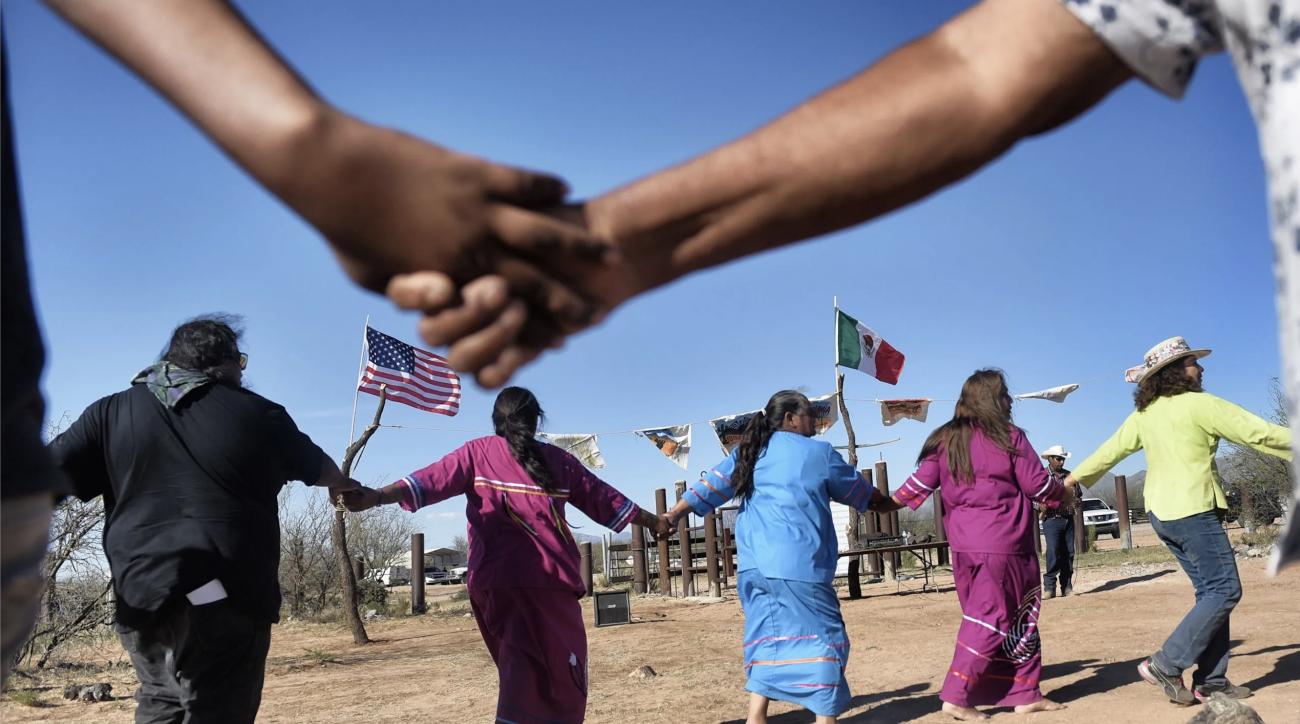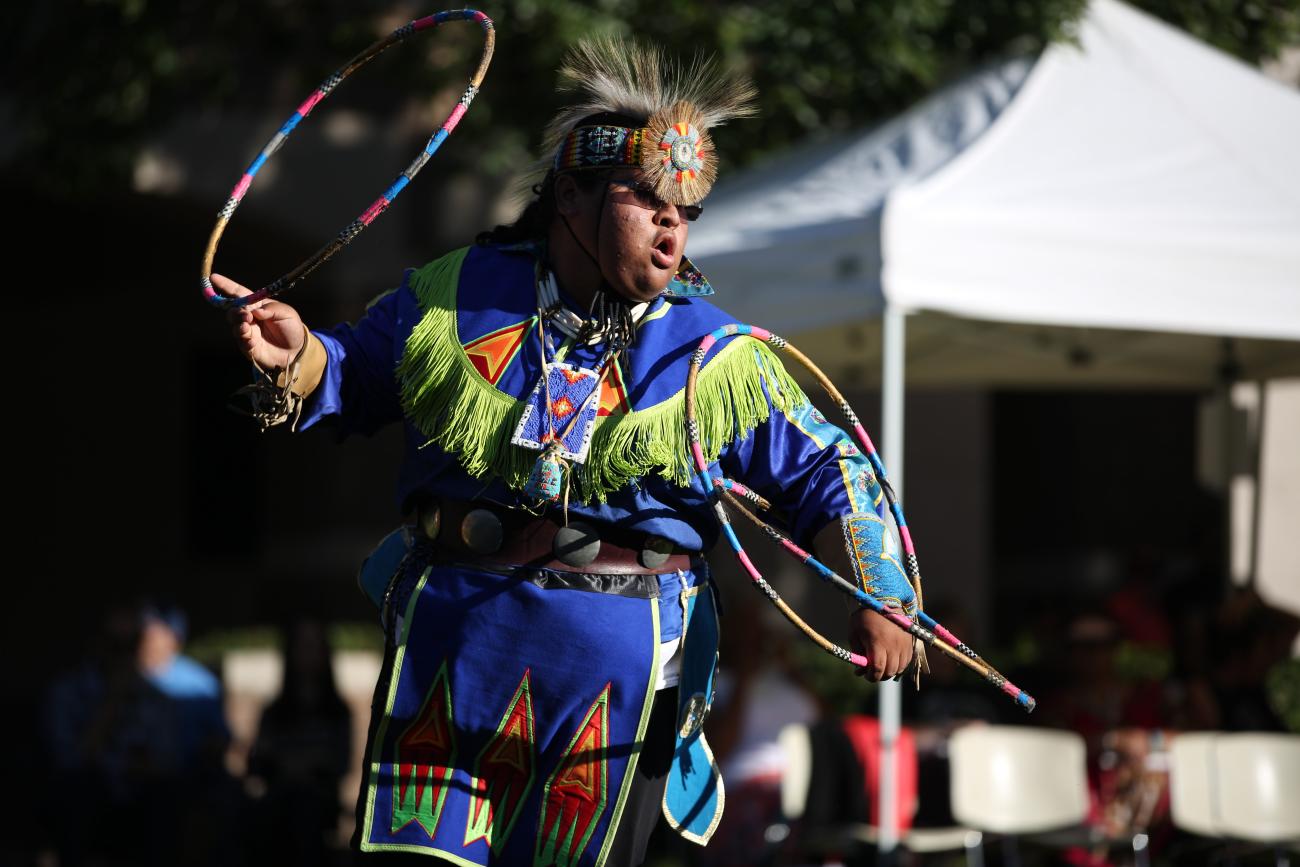
Institute for Transborder Indigenous Nations (ITIN)
What is ITIN?
ITIN is a community of scholars, public intellectuals, and Indigenous community members working on behalf of the interests of Indigenous peoples impacted by the US-Mexico Border. As such, we represent one of many regions around the world in which Indigenous nations intersect with non-Indigenous settler-colonial nation states. Each region is home to a diversity of languages, cultures, histories, nations and bioregions. In the case of the US-Mexico Transborder region, which stretches for nearly two thousand miles, from the Pacific Ocean to the Gulf of Mexico, there are twenty-nine Indigenous communities along the international divide. As an institute housed in ASU’s School of Transborder Studies, our primary focus is the Arizona-Sonora border.
Affiliated Organizations
ASU institutes and centers
Institute for Humanities Research
Center for Political Thought and Leadership
César E Chávez Leadership Institute
Institute for the Future of Innovation in Society
Global Institute of Sustainability and Innovation
American Indian Policy Institute
Morrison Institute for Public Policy
Institute for Social Science Research
Center for Advanced Studies in Global Education
ASU School of Transborder Studies
ASU North American Center for Transborder Studies
University of San Diego, Institute for Peace and Justice, Cross-Border Initiatives
Non-ASU Institutions
Indigenous nations and cultures we represent
US Reservations
California: Barona Band of Mission Indians; Cahuilla Band of Mission Indians; Campo Kumeyaay Nation; Chemehuevi Indian Tribe; Ewiiaapaayp Band of Kumeyaay Indians; Inaja-Cosmit Band of Indians; Jamul Indian Village A Kumeyaay Nation; La Jolla Band of Luiseño Indians; La Posta Band of Mission Indians; Los Coyotes Band of Mission Indians; Manzanita Band of the Kumeyaay Nation; Mesa Grande Band of Mission Indians; Pala Band of Cupeño Indians; Pauma Band of Mission Indians; Rincon Band of Luiseño Indians; San Pasqual Band of Diegueño Mission Indians of California; Iipay Nation of Santa Ysabel; Sycuan Band of the Kumeyaay Nation; Viejas Band of Kumeyaay Indians
For more info on California: Department of the Interior, Indian Affairs, see “Southern California Agency” ; California’s Clean Air Project, “County List of Tribal Nations”
Arizona: Ak-Chin Indian Community; Cocopah Indian Tribe; Colorado River Indian Tribes; Fort McDowell Yavapai Nation; Fort Mojave Indian Tribe; Fort Yuma Quechan Tribe; Gila River Indian Community; Havasupai Tribe; Hopi Tribe; Hualapai Tribe; Kaibab Band of Paiute Indians; Navajo Nation; Pascua Yaqui Tribe; Pueblo of Zuni; Salt River Pima-Maricopa Indian Community; San Carlos Apache Tribe; San Juan Southern Paiute Tribe; Tohono O'odham Nation; Tonto Apache Tribe; White Mountain Apache Tribe; Yavapai-Apache Tribe; Yavapai-Prescott Indian Tribe
For more info on California: Arizona Department of Education, “22 Federally Recognized Tribes in Arizona”; US Department of the Interior, Indian Affairs, Western Region—Agencies, see “Arizona Agencies & Tribes”; The University of Arizona, Native American Advancement, Initiatives & Research, “Arizona Tribes & Research Policies” (https://naair.arizona.edu/az-tribal-research-policies)
Mexican Ejidos
Baja California Norte: Ku’ahles; Cochimíes; Paipais; Kiliwas; Cucapás; Kumiais
Baja California Sur: no ejidos listed
Sonora: Guarijíos, Yaquis, Seris, Pápagos, Mayos

Resources
United Nations Declaration On The Rights Of Indigenous Peoples
International Boundary and Water Commission (US-Mexico Treaties)
US Department of the Interior (Bureau of Indian Affairs)
US Department of Homeland Security (Laws & Regulations)
US Department of Homeland Security (DHS Tribal Consultation Policy)
Gobierno de México, Instituto Nacional de los Pueblos Indígenas